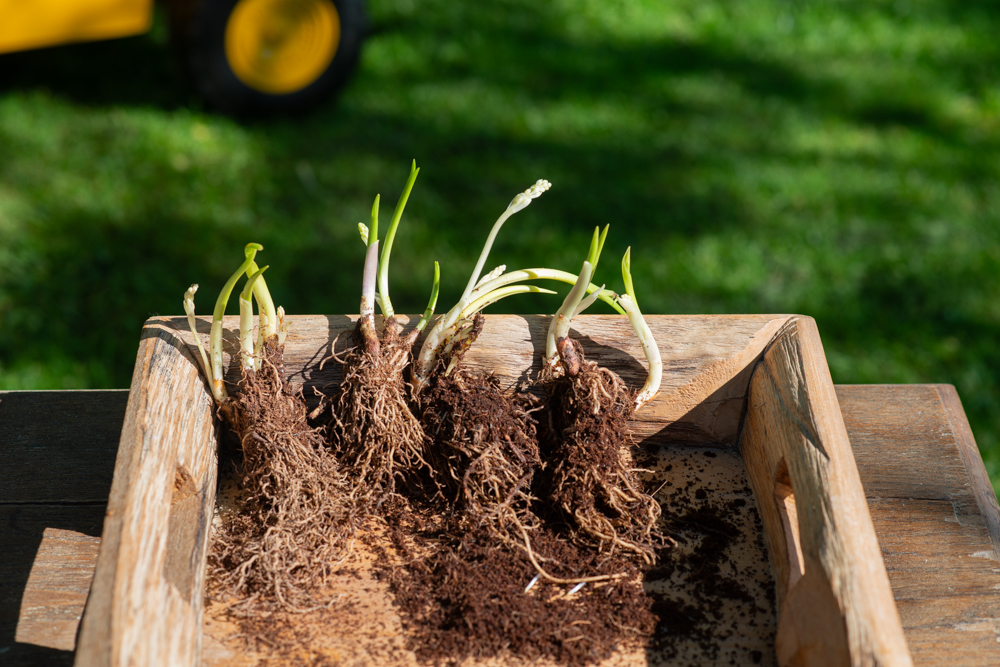Your cart is currently empty!
Bare-rooted plants

One of the biggest advantages of bare-root plants is the ability to easily assess their freshness and health. Bare-root plants cannot be stored for a long time, unlike plants that are already sold in containers. Therefore, if we buy bare-root plants, it means that they are fresh.
We offer a small selection of bare root plants, each plant has its own delivery time, as the freshness of our products is important to us, we do not order roots in large quantities and do not store them for a long time.
There are a number of advantages that make bare root plants a popular choice when planting and transplanting:
1. Economicalt
- Roots are usually cheaper than closed root plants (in pots or containers) because they do not require the cost of soil, containers and additional packaging materials.
2. Ease of transportation
- The absence of heavy soil makes bare-root plants easier to transport.
3. Easy inspection of roots
- Exposed roots can be easily checked for health, damage or disease before planting. This helps avoid transplanting diseased plants.
4. Better rooting
- Such plants adapt to new soil faster, since their root system immediately begins to interact with the surrounding soil.
5. Comfortable fit
- Roots can be planted at any convenient time during the season (usually fall or early spring) while the plant is dormant.
6. Eco-friendliness
- The absence of containers and minimal packaging makes this method more environmentally friendly.
Flaws
However, it is worth considering that plants with an open root system require proper handling and timely planting. The roots can dry out if they are not moistened before planting.
When planted correctly, bare root plants can be a great choice for your garden for years to come!
Here's how to determine the freshness of such plants:
1. Appearance of roots
- The roots must be moist, elastic and light (white or light brown). If they are dry, dark, or look dead, the plant is probably not fresh.
2. No damage
- The roots should not have any rotten or soft areas, cuts or signs of fungal damage.
3. State of shoots
- The shoots and branches of the plant should also be healthy: no cracks, mold or dry ends
4. Elasticity
- If you bend a root or branch slightly, it should be flexible and not break.
5. Smell
- The roots and the plant itself should smell like fresh earth. If there is an unpleasant smell of decay, this is a bad sign.
6. Packaging (upon purchase)
- If you buy exposed roots, check that they have been stored properly: the roots should be wrapped in a damp material (such as moss, sawdust, or sprinkled with peat) to prevent them from drying out.
7. Reaction to water
- If the plant seems a little dry, you can put the roots in water for a few hours. Fresh roots quickly absorb moisture and restore elasticity.
Regular inspection before planting will help avoid problems and ensure that the plants are healthy and thrive!
We wish you successful plantings!

Leave a Reply